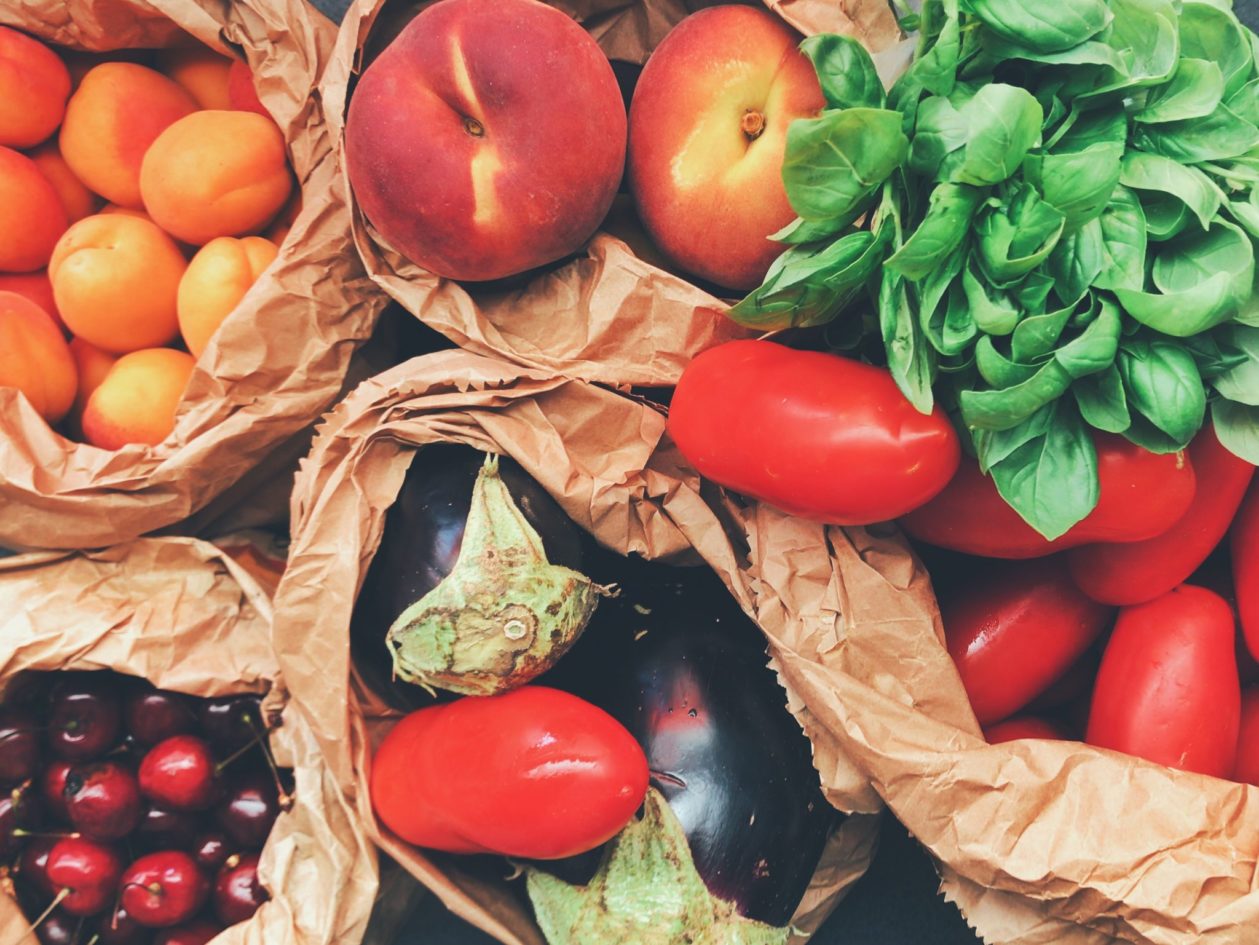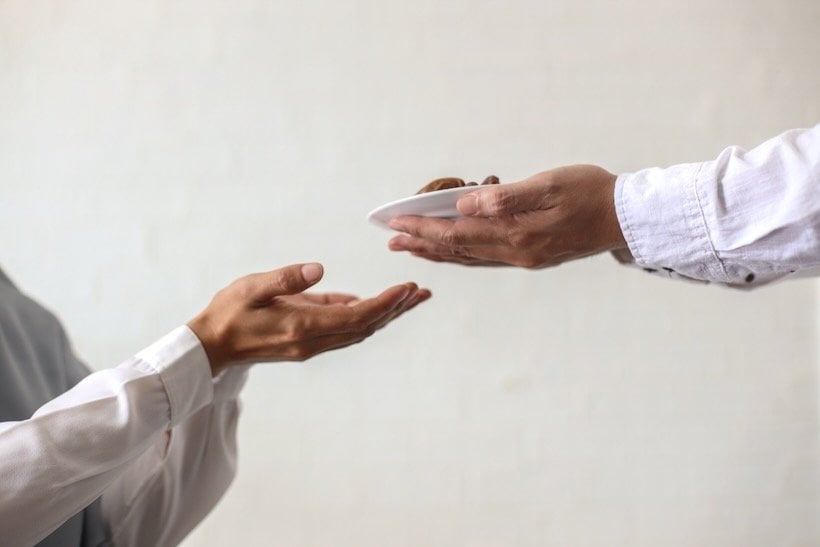The question we are asking each other the most right now, after the initial “Are you safe and well?” is “What are you eating?” Some of my friends have always cooked. Some friends occasionally cooked, when they were not eating out, and I have one friend who didn’t know how to turn on her oven. What I am hearing in this new normal is that everyone is cooking and thinking about food in a different way than they did before the COVID-19 crisis. We are thinking about the food supply chain—from the farms, to the truckers, from the packaging plants to the distributors and to the stores. We think about the raw material that goes into our meals, and for the first time in many decades, we take care not to waste any of it.
Prior to the COVID-19 crisis, the quantity of food waste thrown out each day in America was shocking. Wasted food is the single biggest product in American landfills, surpassing even plastics. Eighty billion pounds of food is thrown away each year in the U.S. This is equivalent to the mass of 1,000 Empire State Buildings.

Initially, we witnessed problems caused by COVID-19 commercial closings. This necessitated the redirecting of bulk production and distribution to consumer-sized consumption. Connections of farms, distributors, wholesalers, retailers and local government agencies are addressing this even as I write. Due to the virus, there may be sporadic shortages of specific items in some areas as production and distribution adjust to current consumer needs and vice versa. Regardless of these logistical adjustments in the supply and distribution network, at the end of this chain, the buck stops with us. We, the consumers of America who drive the economic engine, are changing our thinking and our habits. The habits of our generation have been forced to shift in eight weeks and, if we do this right, the long-term benefits should stay with us for a generation.
Indeed, we are becoming thriftier and more cost-conscious. Leftovers for dinner are becoming a part of the new normal. Around the world, friends, colleagues and strangers are sharing recipes and menu ideas on social media, blogs and in chatrooms. Not since the 1940s WWII food rationing have people been so careful to avoid being wasteful. This is not to suggest the return of ration cards or hoarding. What I am observing is a seismic shift in behavior.
Here is an opportunity to learn from our grandmothers and great-grandmothers. Thriftiness is once again a virtue worth bragging about. Out of this crisis should come a “better normal,” a more sustainable way of buying, preparing and eating. Obtaining provisions (formerly known as grocery shopping) requires planning akin to a military operation:

1) When to order online;
2) When we can get delivery; and
3) The best time of day to go out to pick up so we avoid crowds.
The benefit of this increased diligence is that we are spending our time and money more wisely in a variety of ways. We are supporting our local restaurants (some of which have pivoted to selling groceries and household staples) and supporting local stores and farmers markets. By planning how to implement our own safety procedures for sanitizing the food we bring inside our homes, we are choosing fresh foods that last longer and are buying more root and hard-skinned fruits and vegetables. We look to shop for groceries as infrequently as possible in order to avoid and minimize our potential contact with others. All of this planning is creating a society less willing to waste time, money and, yes, food.
Remember the toilet paper scare at the beginning of the COVID-19 crisis? It was based on a supply chain issue; there was more product bulk-packed for institutional and commercial use (hospitals, schools and office buildings) than was available for consumer use. The same is true for our food supply. Commercial food producers typically distribute to both commercial and consumer channels. Food is the same, although the preparation and packaging may be vastly different. The need to repurpose the food production that in the pre-COVID world used to leave American farms in trucks, flatbeds and tankers to be delivered in bulk packaging to institutions and restaurants has created a logistical conundrum over how and when it should be redirected for distribution to consumers. Once this is fully solved, the abundance of farm-fresh food may affect changes in consumer attitudes and behaviors far beyond thriftiness.
Americans are among the least healthy population in the developed world. A 2019 study cites the U.S. as the 35th healthiest population in the world. We eat processed food over farm-fresh food and choose packaged and prepared food over cooking fresh ingredients ourselves. A shift to more balanced meals with plentiful vegetables and fruit would help lower the obesity, the high blood pressure and the diabetes that has become an upward trend in our society. About 35 percent of adults in the U.S. are obese. This can be attributed to bad nutrition which affects disproportionately those at the bottom of the socio-economic scale. We have seen more cases of the COVID-19 virus recorded in population groups with these underlying health problems. Working toward a healthier population has always been challenging. The COVID-19 pandemic has shone a light on the parts of our populations with high levels of obesity, high blood pressure and diabetes. Maybe in the post-COVID world, this will impact our eating habits in a positive way that no government education program could ever achieve. We will finally be able to realize the change needed to rebuild the health of our society.
On the subject of bulk-to-consumer distribution of healthy food, the role of food banks cannot be understated in this crisis. Often overlooked, they have always been a central element in the social support networks of cities and counties in the United States. This crisis has catapulted their role in sustaining and improving the diet and eating habits of American families into the spotlight. The public-private partnerships between local governments, charities and businesses to sustain and grow the flow of groceries from food banks into the hands of the unemployed and others with food insecurity is one of the many heroic stories of COVID-19. One example is that of a food bank in the Bronx in New York City, where food boxes are being distributed with recipes for preparing nutritionally balanced meals.
So—what are you eating?
Let’s use our food wisely.
We can all be doing more, putting more fresh produce on our tables and using all of the leftovers—not putting our food waste into our landfills. As we work on flattening the curve and suppressing further outbreaks of the virus, let’s work on reducing the incidence of obesity, malnutrition and food insecurity in our country. This is the opportunity for us to create the post-COVID “better normal” that will include a healthier America that we owe to ourselves and our children. Let’s seize that opportunity.







